My grandfather was the first woodworker in my family. He had a masters degree in math and taught trig in high school before he became superintendent of schools. His love for math and geometry drew him into woodworking. “Build in triangles, boy. It is the strongest structure you can make.” When we cleaned out his shop, I do not remember finding any trammels but I’ll bet he had a pair. I have become fascinated with them myself and have many sets.
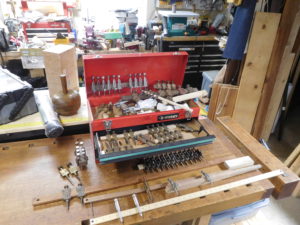
Here are some of my user trammels.
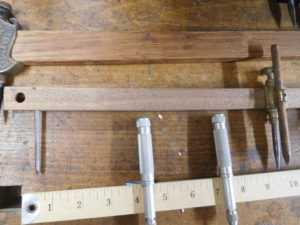
Simply put, a trammel is a beam compass. We all used a leg compass in geometry class. But the leg compass has limited use in a woodshop where dimensions are much larger than drawing paper. So the beam compass is the woodworkers friend. It can be used to describe circles and arcs but is not limited to that task. I use mine for measuring because I find it easier to bypass translation and transfer the measurement directly. I seem to make fewer mistakes when I measure an opening with the trammel and just transfer the measurement to the cutting table.
I got into trammels when I found a vintage single on that famous on line auction site. My months long search for a mate was unsuccessful so I made a fixed point with a nail.
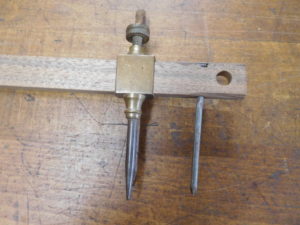
Believe it or not, this trammel served me well for years. I like to use it as a gauge of my woodworking skills. They have improved considerably since this pitiful effort and someday I need to remake this trammel. At the very least, the points should be the same length.
I like yardstick sized trammels for general work. That length seems to work well for my projects. But sometimes I need a different size. To meet this demand from 19th century users, Stanley made bronze trammels in three sizes.
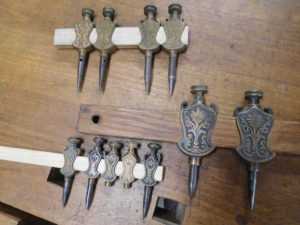
They are nice to collect and to use, having come from an era when tools had beauty.
Sometimes the beam compass really comes in handy, like when I needed an arc for a bookcase top I was building. I used a recent vintage model Stanley trammel set–the one that clamps to the side of a stick. In this case, I clamped the trammels to a six foot furring strip and drew the arc on a piece of plywood. The plywood was on the floor and the static point was in a small hole I drilled in scrap wood and clamped to the workbench leg. I guess I could have used a string, but the trammel was more accurate–and more fun.
I recently acquired a new trammel set.
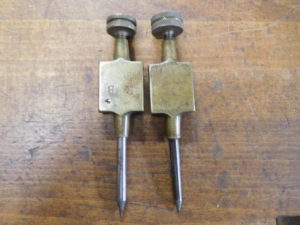
This trammel set was made by “RB” and he was proud of it.
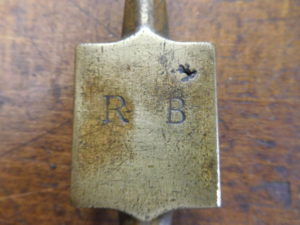
My guess is that “RB” worked in a machine shop. Maybe he scavenged the top screws as they are slightly different. The design looks similar to another set in my collection.
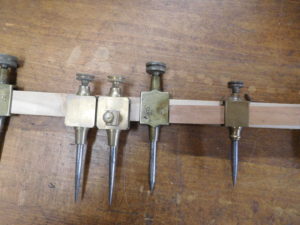
I like the size of this new set, so I grabbed a piece of cherry from the scrap bin and made a beam.
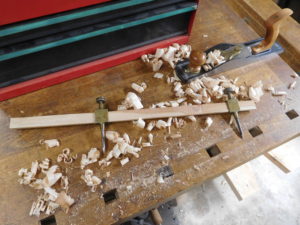
Next I drilled a hang hole in the beam and put the set near my workbench. I am sure “RB” would be proud to see his trammels back in action.
